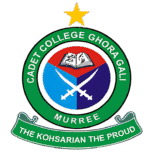Co-Curricular Activities
Co-curricular activities are those activities that take place outside of the regular classroom. In this lesson, we’ll explore the definition of co-curricular activities as well as their advantages and disadvantages.
Co-Curricular Activities
Amy is a busy high school student. She is very focused on her regular core studies, but she is also involved in the school band and likes to participate in the debate club. Amy loves taking part in many activities, but she knows that it is important to balance her time and manage her priorities so as not to become overwhelmed. The activities that she is involved in, also called co-curricular activities, are important to her and she wants to be successful in everything she does.
Co-curricular activities are activities that take place outside the classroom but reinforce or supplement classroom curriculum in some way. They are ungraded and do not offer any form of academic credit, but they do provide complementary learning of some form. Examples of co-curricular activities might include National Honor Society, student council, school sports teams, math clubs, chess clubs, talent shows, spelling bees, writing competitions, debates, mock trials, school newspapers, and drama productions. All of these activities take place outside the traditional classroom and offer no grade or academic credit, but they provide supplementary and complementary instruction and education for students.
Extracurricular Activities
It should be noted that there is a definite, though sometimes fuzzy difference between co-curricular and extracurricular activities. Where co-curricular activities are connected in some way to the school and to academic learning, extracurricular activities step outside of this realm. Extracurricular activities are those activities that occur outside of the educational setting and do not provide instruction or experience to supplement the academic curriculum. Involvement in a sport that happens outside of the school, for example, would be considered an extracurricular activity. Other examples of extracurricular activities might include church related activities, music classes that are not associated with the school, dance recitals, Girl Scouts or Boy Scouts, or martial arts competitions.
Co-Curricular Advantages
Co-curricular activities can provide students with a lot of interesting and important experiences outside the traditional classroom. There are many advantages to involvement in co-curricular activities, including:
- Allowing students to explore strengths and talents outside of academics
- Helping students develop stronger time-management and organizational skills
- Teaching the importance of following through on commitments
- Giving students the opportunity to build friendships and participate in group activities outside of the tight circle of the regular classroom
- Helping to build confidence and self-esteem
- Providing a way to keep students supervised outside of school hours
- Channeling their energies in positive directions rather than toward drug abuse or crime
- Building skills that are not necessarily taught in the classroom but are still important for the future
